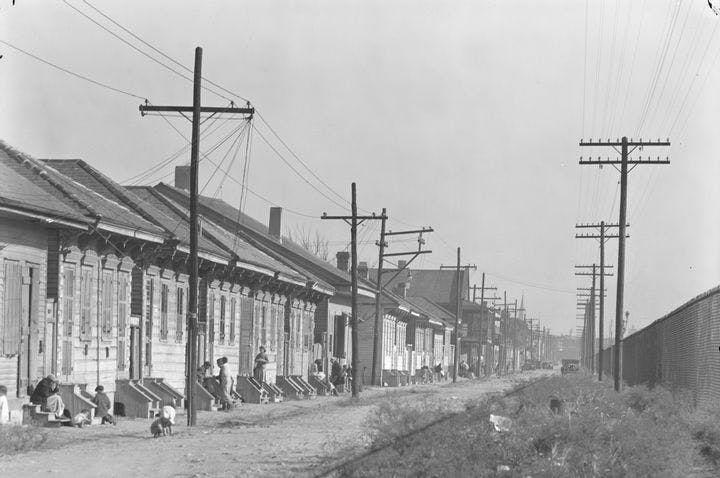Summer 2009
The Camera Speaks
– Andrew Starner
Andrew Starner on photography and literature.
Walker Evans’s image of Allie Mae Burroughs, a sharecropper’s wife whose tautly drawn lips attest to the torments of the Great Depression, is perhaps more famous than the 1941 book in which it appears. A collaboration between Evans and writer James Agee, Let Us Now Praise Famous Men documented the lives of Alabama sharecroppers at a critical national moment. But Evans’s photographs are not simply textual illustrations; indeed, Agee later admitted that he felt he was providing a book-length commentary on Evans’s photographs. As a powerful work of art, Let Us Now Praise Famous Men transcends its subjects and their story to become something more than a strict documentary.
The photograph of Allie Mae Burroughs is one of the more than 90 beautiful images that appear in Photography and Literature, a theoretical study by François Brunet, a professor of American art and literature at Paris Diderot University. From the moment of photography’s inception in the 1830s, Brunet argues, the medium’s scientific, technological capabilities were in tension with its experiential, artistic potential. As Brunet skillfully negotiates more than 150 years of photographic history, he offers a coherent argument for the emergence of photography as a kind of writing, with possibilities for narrative and fiction that exceed its promise to capture the world as it is.
As a subject, the relationship of photography and fiction is hardly new. As early as 1840, Frenchman Hippolyte Bayard experimented with artifice in his Self-Portrait as a Drowned Man. (Bayard was cheated of recognition by the inventor of the daguerreotype, Louis-Jacques-Mandé Daguerre, who publicly announced his method of photographic reproduction after Bayard was persuaded to hold off on unveiling a rival process.) Bayard posed as if dead, and wrote in an inscription on the back of the photograph: “The Government, which has been only too generous to Monsieur Daguerre, has said it can do nothing for Monsieur Bayard, and the poor wretch has drowned himself.”
While the 19th-century realist novel, like the photograph, is a product of that period’s investment in capturing life as it appears, writers and artists have increasingly used photography to blur the line between fiction and reality. In Brunet’s account, artists such as Cindy Sherman use photography not for its documentary fidelity but for its malleability. Her Untitled Film Stills (1977–80) is a series of self-portraits in which she depicts herself as an anonymous movie star, a seeming contradiction in terms that suggests the instability of identity. Novelists including the late W. G. Sebald have used photographs to interrupt and complicate their texts, creating a hybrid form. In Austerlitz (2001), which is punctuated by melancholic photographs, Sebald attempts to reconstruct a personal past and a larger history of the Holocaust with a blend of fiction and autobiography.
Reproduced on the cover of Brunet’s book is a 1978 photo by Bernard Faucon titled The Banquet. It’s a meticulously crafted scene of a catastrophic fire staged with life-size and lifelike mannequins of children, which appear in postures of terror or delight at the flames that threaten to engulf an elaborately set table, though their faces are inscrutable. The photograph has a startling eloquence, and tells a truth that belies its constructedness. This ghastly photo-fiction might be the only way to speak to the unspeakable events of the most photographed century.
* * *
Andrew Starner is a graduate student in theater and performance studies at Brown University.
Reviewed: Photography and Literature by François Brunet, Reaktion, 173 pp, 2009.
Photo courtesy of Wikimedia Commons
